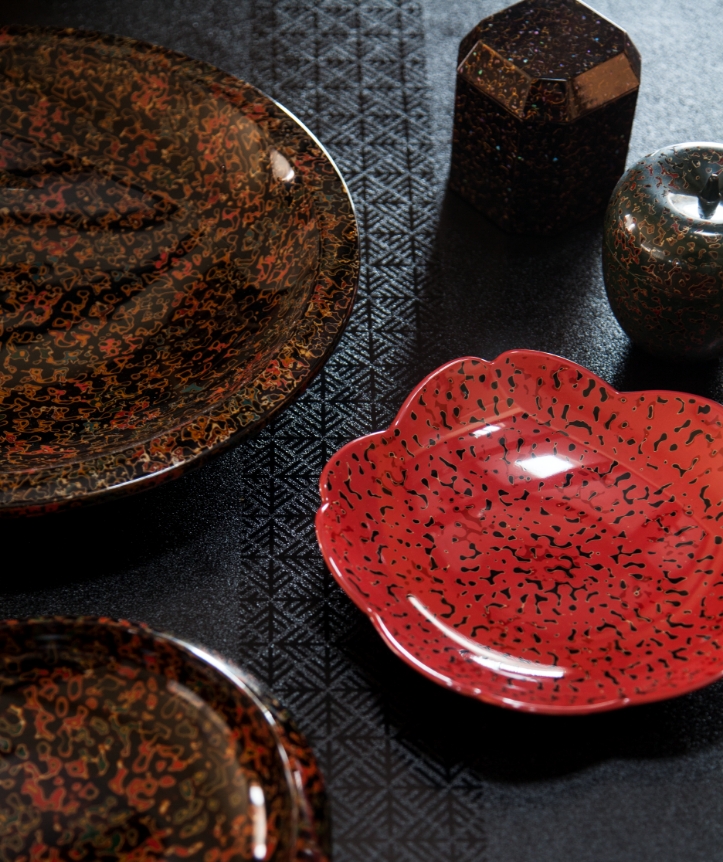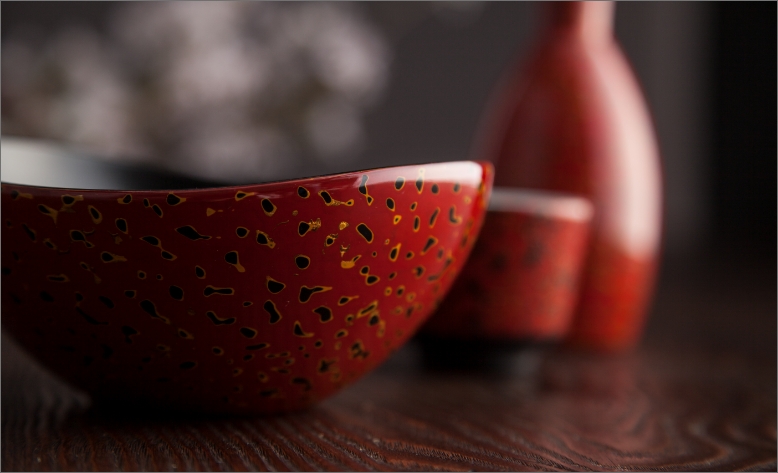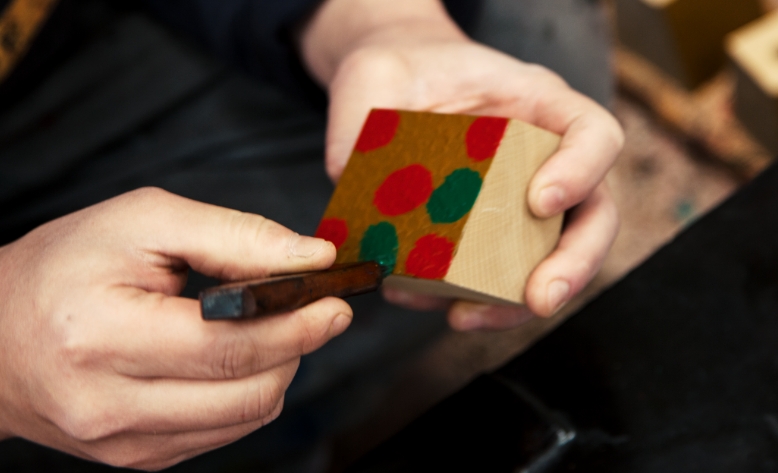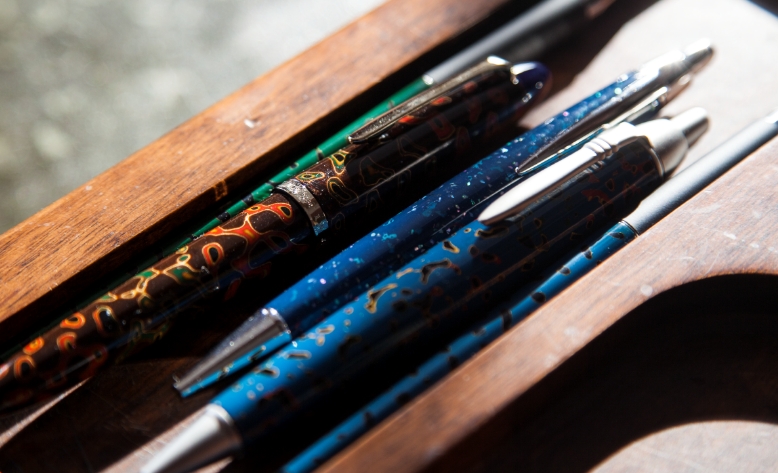StylesIntroducting Tsugaru Nuri Styles
Tsugaru Nuri Styles
The four traditional styles of Tsugaru Nuri are Kara-nuri, Nanako-nuri, Monsha-nuri, and Nishiki-nuri. The most prevalent style is Kara-nuri. Nanako-nuri is characterized by a refined dotted design that resembles a traditional kimono pattern. Monsha-nuri has a modern, elegant appearance featuring a black base. Lastly, Nishiki-nuri makes use of Nanako-nuri as a base, which is embellished with elegant classic designs

Kara-nuri
Kara-nuri is the most popular style of Tsugaru Nuri and has the longest history. Kara-nuri is characterized by the speckled spots made using a special pallet knife with multiple circular holes. The lacquer is applied using this special tool, dried, then polished, a process that is repeated over and over again.
The number of steps in making a piece of Tsugaru Nuri adds up to 48. Each product is a one-of-a-kind item due to the intricate and time-consuming nature of the craft. This uniqueness is one of the highly valued features of Tsugaru Nuri.
The word "kara" of Kara-nuri stands for something that is unique and exceptional.
Nanako-nuri
Nanako-nuri is made using togidashi kawarinuri, a method in which the pattern design is made with rape blossoms. When the first layer of colored lacquer is applied on the base, rape blossom’s seeds are scattered across the surface to make small circles while still wet. The seeds are removed once the lacquer dries. The lacquer is then polished thoroughly to bring out the elegant circular shapes in the Edo komon style (designs with small elaborate patterns used for kimono during the Edo period). The term "nanako" originates from the resemblance of the circular shapes to nanako, or fish eggs.
Monsha-nuri
"Sha" in Monsha-nuri comes from the word used for rice husks in the Tsugaru region. Black lacquer is used to draw patterns on the base coat, dried, then ash from burnt rice husks is scattered across the surface. The ware is then polished using whetstone or coal to expose the black design. This method of polishing is used exclusively in the creation of Tsugaru Nuri. The design of black patterns on a black base features a modern appearance that gives life to the ware.
Nishiki-nuri
The highlight of Nishiki-nuri is the impressive lavish gold and silver lacquer that covers the surface. Nishiki-nuri is a variation of Nanako-nuri and it is the newest style among the four styles currently in practice. On top of the base, which is made using the Nanako-nuri style with yellow and red colors, black lacquer is used to design classical patterns of scrolls or sayagata (gossamer-figure) of diamonds or lightening shapes. Next, a layer of vermillion is applied with a brush. After polishing, the circular design of the base softens the patterned design. This style of Tsugaru Nuri requires a high level of expertise, which significantly limits the number of Tsugaru Nuri artisans who are able to craft it. Consequently, Nishiki-nuri Tsugaru Nuri products available today are extremely rare and valuable.
Maintenance and Care
Facts about Lacquered Products
- An environment with relative humidity is preferred.
- Lacquer may crack if exposed to extreme dry conditions.
- Lacquer may get damaged if exposed to direct sunlight, ultraviolet rays, friction, or sudden temperature changes.
- Surface may get scratched with the use of abrasive cloth or steel scrub brush.
- Lacquer absorbs water. If left in water, the water will leave permanent marks on the lacquered surface.
- New lacquerware may have a peculiar odor. The odor can be reduced by wiping the surface with a solution made with water used to wash rice and a small amount of vinegar, then rinsing with warm water.

Care Instructions
- Wet a soft and clean cloth (such as gauze) with warm water and wring it well.
- Gently wipe the surface with the cloth. If the surface is dirty, us a few drops of dish soap on the cloth.
- Let the lacquerware dry naturally indoors. Do not use dishwashers, hair dryers, or stoves for drying.
- If you use dish soap, wipe the surface with a dry cloth to completely wipe it down.

How to Store
- Store the lacquerware in dark conditions avoiding direct light.
- Wrap the lacquerware in washi paper for safe storage if only using it occasionally.
- It is recommended to periodically expose the lacquerware to outside moisture and avoid storing it in a dry location for an extended period of time.

Repair
In case of chipping, cracking, or loss of shine, please contact the Aomori Lacquerware Federation for repairing your Tsugaru nuri lacquerware.